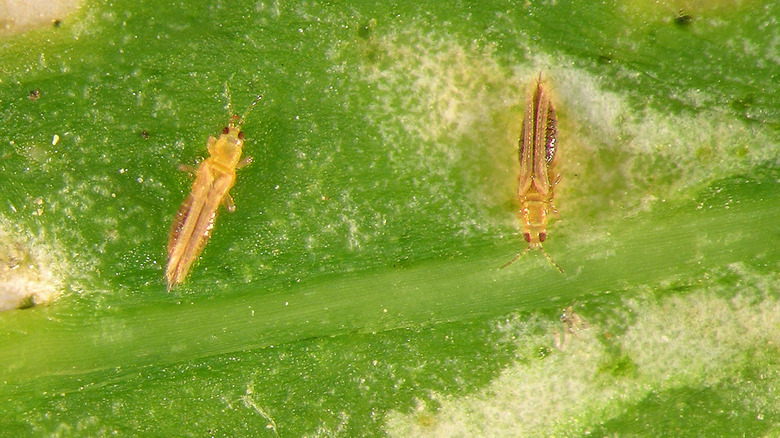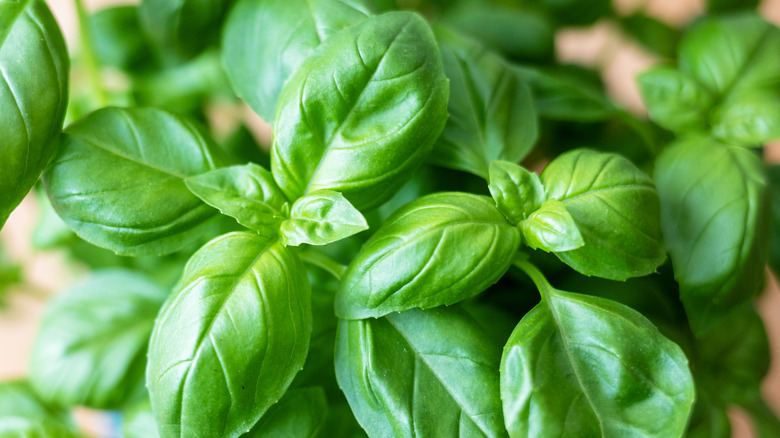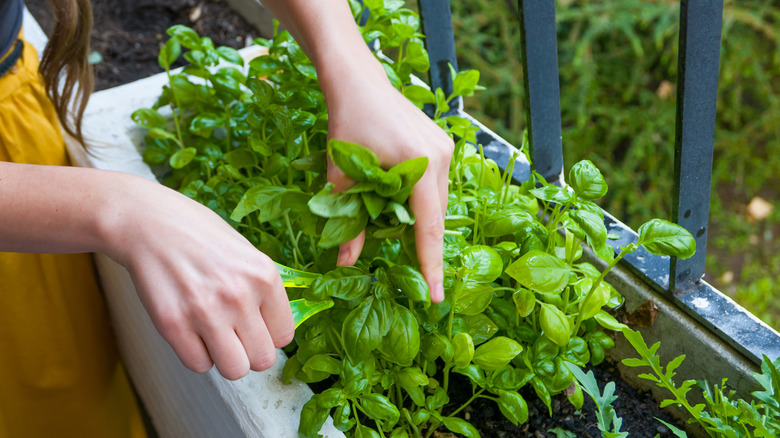Is Planting Basil The Secret To Keeping Thrips Out Of The Garden?
If you've developed thrips in your garden, you may recognize the risks to your plants. These small, fringed-winged insects will bite into the outer layer of their host plant and then suck out the material within, which can cause plants to stop growing properly and damage leaves. They often create pale, small spots on these leaves, a notable sign it's time to do something about these pests. You may not know that the strong scent of basil could be exactly what you need to help keep thrips out of your garden for good.
Basil is more than just the perfect choice for a pot of homemade tomato sauce or a fresh garden salad herb. The sweet, unique smell of basil is so strong it can be easily recognized in virtually any environment, including your garden. Basil can be used as a natural pest repellent in areas where thrips and other pests that stay away from strong smells are present. It doesn't necessarily harm the pests, but it blocks their ability to smell, and in the case of thrips, the bugs just don't like the herbal, citric-like scent that basil produces. In other words, you can use basil as a barrier and natural defense.
Why basil works to repel thrips
Basil's characteristic smell is due to eugenol, a volatile compound in the plant, as per the Salk Institute. Eugenol synthase, an enzyme, produces eugenol and propels it airborne. This creates the strong scent this plant is known for, and what gives it some antimicrobial benefits. This process is a part of the plant's natural defense and development process to draw predators away.
By using the premise, that basil's compounds help repel pests, it is possible to use this not just for basil plants themselves but for the protection of other plants growing in your garden. That pungent scent affects bugs, including thrips, mosquitoes, and flies. You can even use it inside for thrips as well as fungus gnats that make their way into potted plants.
The thrips' sense of smell is crucial to their overall survival. They use scent and vision to find host plants to eat so they can continue to breed and flourish, according to a 2008 review published in Natural Product Communications. The floral volatiles in plants either draw these pests in or push them toward other hosts. These pests are looking for easy access to a host plant and meal, so they are likely to move away from scents they don't like in favor of others more attractive to them.
How to use basil to repel thrips
Thrips are the type of damaging insect you may want to be aggressive about treating to ensure your garden can flourish. Luckily, there are numerous strategies for controlling them, but a natural pest repellent is best for those who don't want to use chemicals. Basil can be a component of that treatment process. You have several avenues to consider to make the most out of basil as a treatment for thrips. The first option is simply to use companion planting, where you place a basil plant near the areas of your garden you wish to keep thrips out of, such as around your tomato plants or flowering shrubs. Typically, basil benefits from at least six hours of sunlight and warmth as well. It also needs moist soil conditions and a soil that's nutrient-rich.
If you don't want to have a basil plant growing in your yard, an alternative is to spread fresh cuttings of basil around the areas where thrips are present. If the plant is fresh enough, this could create a significant reaction, encouraging the bugs to head in another direction. The difficulty with this option is replacing the leaves once the smell dies down (and having a good store of them to use). If you have a plant growing in another area of your yard, you can use those clippings to support thrip protection in various other locations, though, with simple cuttings.


